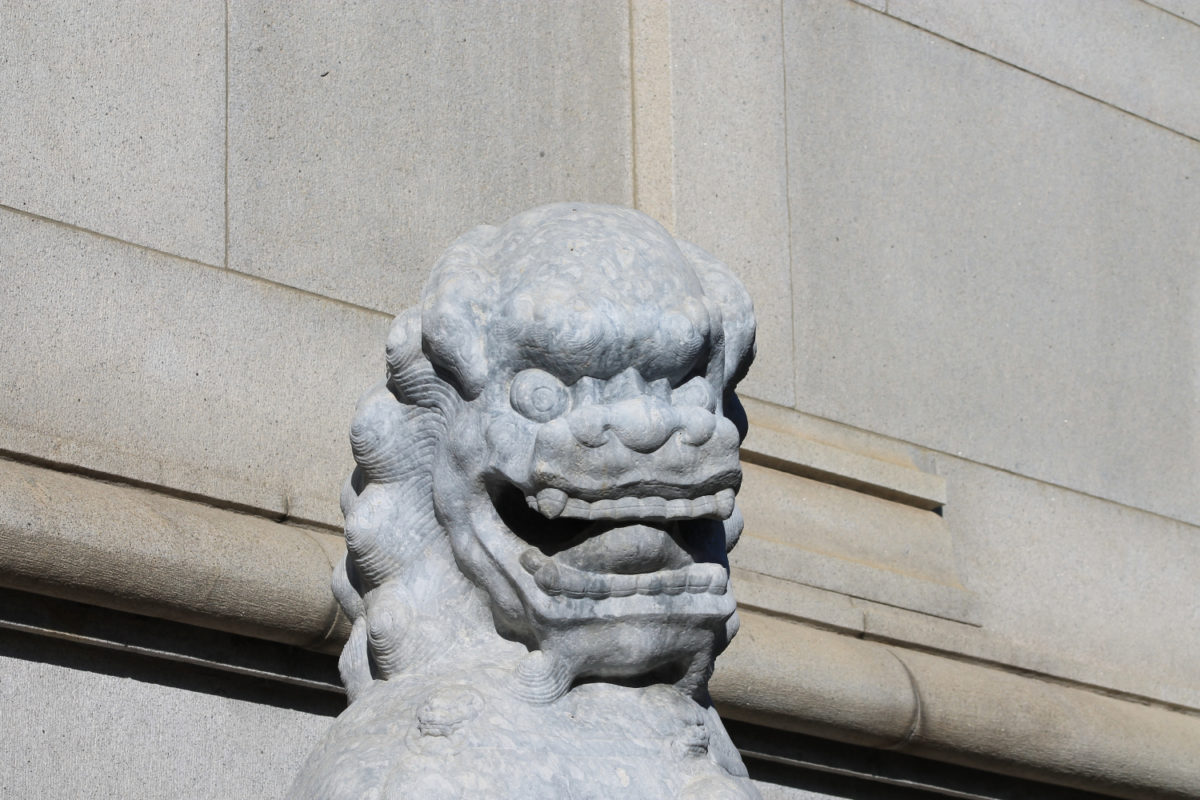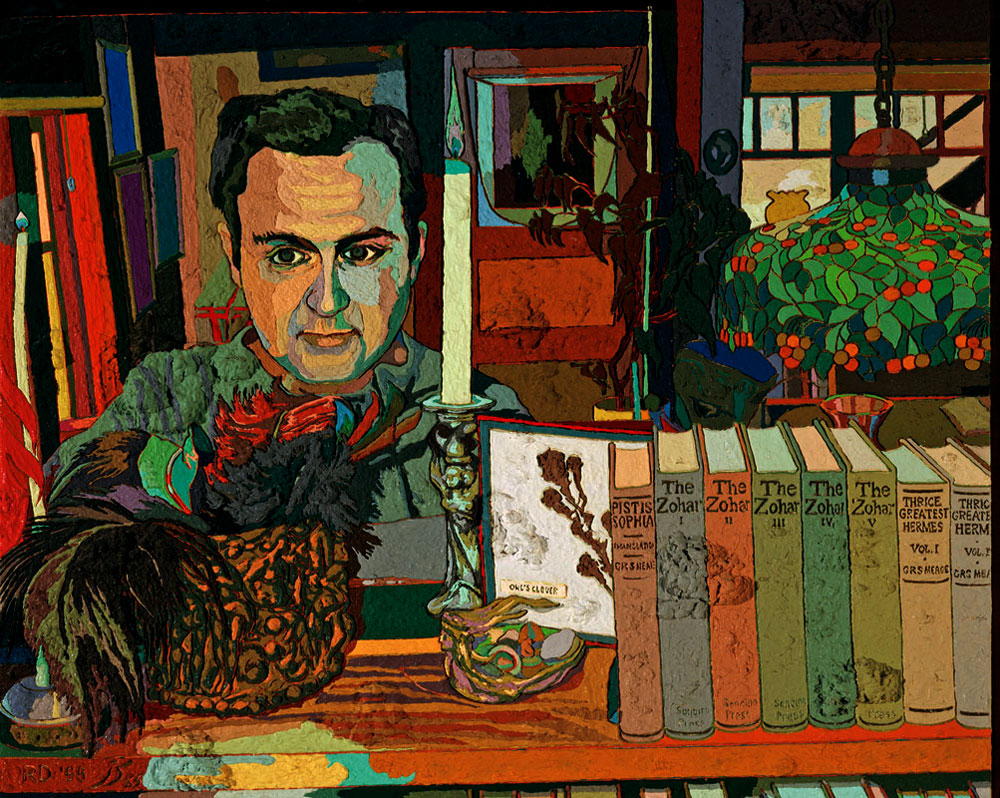Part I: Colossal Wrecks

“I think you said Rooshan Empire, sir?”
“It is Rooshan, ain’t it, Wegg?”
“No, Sir, Roman. Roman.”
“What’s the difference?”
In Our Mutual Friend (1870), Charles Dickens’s last completed novel, Silas Wegg, a “literary man with a wooden leg”—he sells ballads at a stall near Cavendish Square—is hired by one Nicodemus (“Noddie”) Boffin, known as the “Golden Dustman,” to read aloud from a three-volume set introduced by its proud owner as “History-of-the-Decline-and-Fall-of-the-Rooshan Empire.”
Newly rich but barely literate, Noddie Boffin superstitiously imagines books to be leather-bound personages who require a ventriloquist, like the ghosts in Homer who need fresh blood to speak. Wegg can read but is not terribly learned, so when Noddie asks him how to distinguish among empires—an excellent question—he is at a loss until a “bright thought” saves him.
“Suffice it to observe that the difference is best postponed to some other occasion when Mrs. Boffin does not honour us with her company. In Mrs. Boffin’s company, sir, we had better drop it.”
Having broadly hinted at the indecency of Roman history, and shown “manly delicacy” in doing so, Wegg proceeds doggedly to his task: “taking all the hard words, biographical and geographical, getting rather shaken by Hadrian, Trajan and the Antonines, stumbling at Polybius (pronounced Polly Beecious and supposed by Mr. Boffin to be a Roman virgin . . .).”
“Commodious!” Noddie gasps at the antics of the dissolute emperor, when the recital is done. “Commodius fights in that wild-beast-show, seven hundred and thirty-five times in one character only! As if that wasn’t stunning enough, a hundred lions is turned into the wild-beast show all at once!”
Would a history of the “Rooshan Empire” have been any more edifying? In 1581 Ivan the Terrible, the first tsar, in a fury struck his son, the tsarevich, Ivan Ivanovich, a blow with his scepter, which, after some agonizing suspense, killed him. After a Time of Troubles came the reign of the Romanovs (1603-1918), epitomized by the Russian litterateur Dmitri Merejovsky as “Murder and adultery, blood and mud, ‘the fifth act of a tragedy played in a brothel.’ Peter I kills his son; Alexander I kills his father; Catherine II kills her husband. The block, the rope, and poison—these are the true emblems of the Russian autocracy.” So they remained until the night in July 1918 when the last tsar, the abdicated Nicholas II, along with his family, was slaughtered in a cellar in provincial Ekaterinburg—victims like so many Roman dynasts to what Gibbon calls “the vicissitudes of fortune . . . which buries empires and cities in a common grave.”
Empires always come down to the dominance of a state or people—or it might be several—by the rulers of another. Throughout recorded history, and no doubt before, empires have appeared in as many forms as the will to power has found the material means to enable. There have been empires organized along lines monarchical, oligarchical, priestly, mercantile, and ideological—usually, some combination thereof; empires ruled by living gods, like ancient Egypt, but more often by those who claim to be their anointed. They have projected their power by sea and by land, and varied in size from continental regimes like ancient Rome and Han China, which encompassed the “known” worlds of their respective civilizations, to the mini-Venetian Empire (12th-15th centuries), whose lagoon metropole was the size of Central Park, yet projected itself through trade and diplomacy as a European power. The Venetians would vaingloriously mark their rule with their winged lion rampant on a tall column; the lion smiling, if the locals were cowed, and frowning if not. In old Greece the lion was always frowning.
It is not at all difficult to imagine the end of Empire, because history has witnessed the ends of so many; it might even be said such endings are what history largely consists of. It is very easy to envision what comes after Empire, because we have seen it so often: an encyclopedia of images extends from the writing on a Babylonian king’s wall to the red flag over the Reichstag in 1945 and the fall of the Berlin Wall in 1989. “After Empire” conjures the jumble of stunted columns and exposed brick in the Roman Forum, and the 18th century Piranesi prints which are actually more evocative than the place itself. Ravenna, the last capital of the Western Roman Empire, has the air of a resort city permanently out of season, yet the handsome adolescents condescending to mingle with tourists in the old town are at the center of their world.
From Babylon to Britain, from Assyria to America new empires have been built upon the ruins of older—territorially, materially, and often ideologically. In the 19th century, when its merchants and soldiers were enlarging Europe’s dominion in every corner of the Earth, its scholars and adventurers were excavating and expatriating the monuments of extinct empires. Napoleon’s invasion of Egypt in 1798 led to the discovery of the Rosetta Stone and a transatlantic vogue for all things Egyptian, of which George Washington’s pharaonic obelisk is the most conspicuous American monument.
It is not at all difficult to imagine the end of Empire, because history has witnessed the ends of so many; it might even be said such endings are what history largely consists of.
Like a guilty conscience, looted relics installed in great museums pointed a moral, and still do. Shelley’s poem “Ozymandias” (1818) was inspired by the fragmented bust of Ramses II which he saw in the British Museum (and remains there); the poem imagines the tyrant’s “shattered visage,” unplundered, half-sunk in desert sand:
And on the pedestal these words appear:
“My name is Ozymandias, king of kings:
Look on my works, ye Mighty, and despair!”
Nothing beside remains. Round the decay
Of that colossal wreck, boundless and bare,
The lone and level sands stretch far away.
In the 1820s, at the same time Britain was consolidating its dominion in India,the painter John Martin, a provincial upstart from Newcastle-upon-Tyne, was achieving a Warholesque fame in London with enormous canvases of 12 feet or longer, replete with doom and gloom, decline and fall. The most famous, Belshazzar’s Feast (1821), was viewed by thousands—the first artwork to require a velvet rope—and reproduced in prints that adorned the Brontes’ humble home and the tsar’s palace alike. Critics, led by Ruskin, despised Martin as a bombastic parvenu, but enormous crowds came to gape, revering him as a visionary, even a prophet, as he went on to enlarge his vistas with dinosaurs (a recent discovery, also invoked by Dickens in Bleak House) and the End of the World. Martin would fall drastically out of fashion, but his gaudy influence can be traced from the Lancashire-born American painter Thomas Cole’s famous five-canvas cycle, The Course of Empire (1833-1836), now in the collection of the New-York Historical Society, to the stupefying sets for the Babylon sequences in D. W. Griffith’s Intolerance (1916).
In its beginning is Empire’s end—the incessant rise and fall that Shelley wonders and despairs at in the “Chorus” from Hellas (1822):
The world’s great age begins anew,
The golden years return,
The earth doth like a snake renew,
Her winter weeds outworn:
Heaven smiles, and faiths and empires gleam,
Like wrecks of a dissolving dream.
The ruins of Assyria and Babylon were excavated in the 1840s by Sir Austen Henry Layard (1817-1894), a young scholar-adventurer abroad in the Middle Eastern realms of a crumbling Ottoman Empire. Layard was one of those indomitable Victorians, unshaken by difficulty (such as how to ship massive ancient ruins half-way around the world), a polymath, who taught himself cuneiform; in short, a perfect agent of empire. With the plan of following his father into the Ceylon Civil Service, Layard was making his way overland to India when he first saw the ruins of Nimrud on the Tigris and the huge mound near Mosul, marking the “common grave” of Nineveh. Once the crucible of world history, Mesopotamia was now a backwater. Layard’s plundering brought to London the blue-tiled lion frieze upon which the biblical Nebuchadnezzar gazed, and the palace gates of Nineveh, guarded by winged bulls, human-headed and hipster-bearded, which have remained in the British Museum ever since.
In his essay “America and Empire” (1986), an admirably clear-eyed exposition of the subject, Arthur M. Schlesinger, Jr. notes: “‘Imperialism’ did not even exist as a word until the nineteenth century”; which is true, but how long has it existed as a fact? And is there a principled difference between imperialism and Empire?
“The great wave of European expansion took place in the sixteenth, seventeenth and eighteenth centuries,” writes Schlesinger, the political biographer of Franklin D. Roosevelt and the court historian of the Kennedys. “It provoked no systematic analysis of causes. Explorers, conquistadores, friars and settlers were doing what came naturally—claiming land, seeking gold, saving souls, establishing colonies.”
Even when “imperialism” did become a cause and catchword in the 19th century, the word hearkened back to a political arrangement half as old as time: i.e., the “personal sovereignty of a powerful ruler over numerous territories.” From Sargon of Akkad, the conqueror of Sumeria in the third millennium BCE, to Napoleon and Adolf Hitler, who each, about a century and a half apart, exercised a transient authority over most of Europe, the most dangerous place to be in relation to such voracious creatures was, exactly, next-door. Granted, the great exceptions: the Aztec and Incan empires were overcome by soldiers pledging allegiance to the far-away monarchs of Spain, although scholarly opinion now agrees that these conquests were enabled by the pestilences the conquistadors brought with them. Even so, the once up-to-date, now old-fashioned “formal” overseas domains of the European Age of Empire (“Hail, Britannia!” “mission civilisatrice,” and all that) were historically anomalous, and did not long survive the European civil war that lasted from 1914 to 1945. Proximity is (almost) always power.
…Polybius attributed Rome’s rise to its singular constitution, which mixed elements, monarchical, obligarchigal, and democratic… adding that the ruling class buttressed the regime with a religious cult; superstition, which Greeks held in contempt, was what kept the Roman commonwealth together.
Empire had a recorded history thousands of years old by the time the Greek historian Polybius wrote The Rise of the Roman Empire in the second century BCE. A soldier-diplomat born in Megalopolis, a young city-state in Thessaly, Polybius was among the 1000 members of the Achaean League arrested and carried off to Italy as political hostages in 168, after the Macedonians were defeated in the Battle of Pydna, reducing Greece to vassalage. Previous friendly dealings with Rome, along with his reputation as a military tactician and skill on horseback, recommended Polybius to his captors, the rising power elite on the Tiber. While most of the other hostages were exiled to the Etrurian countryside, and eventually died there, Polybius remained in Rome as an honored guest in the household of Aemilius Paullus, the Roman general whose troops had detained him, and was adopted as a mentor by Paullus’s younger son, Scipio Aemilius Africanus, the namesake and, by adoption, grandson of Scipio Africanus, the Elder, the great Roman commander who defeated Hannibal at the battle of Zama in 202.
It is not too fanciful to say that Polybius lived in what was to be Rome’s future, before he set out to write—which is to say, invent—its past. The elder Scipio was disliked by Rome’s old-fashioned aristocracy for “his luxurious tastes and his Greek culture”; holding command in the field for an unprecedented ten years, and presuming to have coins made in his own image, Scipio presaged the Caesars; his Hellenizing was continued by the younger Scipio, who led a cultivated set of wealthy, warlike young men in which Polybius shone as an adornment. Polybius accompanied the younger Scipio on his campaigns in Spain and North Africa in the Third Punic War; freed in 151, he rejoined his friend and witnessed the surrender of Carthage in 146, which followed three years of siege and famine, followed by a desperate six days of street fighting. Following the grim order of the Roman senate, Scipio saw that the city was set afire, those citizens who survived were enslaved, and salt was sown on the ruins. On beholding the terrible end of Carthage which “had ruled over so many lands, islands, and seas, as rich in arms and fleets, elephants, and money, as the mightiest empire,” Scipio wept. Of course, as he confided to Polybius, he feared that the same fate might come for Rome in some distant time, as long ago it had come to Troy from which Aeneas had fled with his father on his back.
Scipio loyally supported Polybius’s researches and travels, which eventually extended beyond the Pillars of Hercules to the coast of Spain and Africa and to Alexandria. With his proximity to power and worldwide travels, Polybius was like antiquity’s Arthur Schlesinger, Jr. and Samuel Eliot Morison rolled into one. Immodestly but quite rightly, he proposed himself as the ideal historian “to discover by what process and under what political system the whole world was subjected to the rule of Rome, an event completely without precedent in the past.” And? After close observation and long reflection, Polybius attributed Rome’s rise to its singular constitution, which mixed elements, monarchical, obligarchigal, and democratic, such as Alexander’s tutor, Aristotle, had distinguished; adding that the ruling class buttressed the regime with a religious cult; superstition, which Greeks held in contempt, was what kept the Roman commonwealth together.
“A will for broad conquest without tangible limits, for the capture of positions that was manifestly untenable—this was typical imperialism.”
In his generation, Polybius had grown up amid the giant fragments of Alexander’s Cosmopolis, the world-state that became a “dissolving dream” after the conqueror’s early death, when his empire was divided by his successors, the Diodachi, but was revived for half a millennium by Rome.Two thousand years later, the Austrian-born economist Joseph Schumpeter (1883-1950) went back to the same ancient empires to show “what imperialism looks like when it is not mere words.” Schumpeter, too, wrote at a time, during the First World War, when the world order in which he had grown up—specifically, the aristocratic and cosmopolitan milieu so well conjured by Frederic Morton’s classic A Nervous Splendor (1979)—was a “dissolving dream.” His essay on “The Sociology of Imperialisms” was published in 1918, the year in which the German, Austro-Hungarian, Russian, and Ottoman empires collapsed. 1918 was a time for long views, and Schumpeter’s view was at once very long and brutally reductionist; he was intent to find the “one basic trait common to all, even the most modern brand of imperialism—a trait which for that reason alone cannot very well be the product of modern economic evolution.” That done, Schumpeter could relegate to footnotes, if he bothered with them at all, the scholastic arguments about finance capital, overseas markets, overproduction, and nationalism which preoccupied bourgeois and Marxist explainers of imperialism (J.A. Hobson among the former, Rudolph Hilferding, Rosa Luxembourg, V.I. Lenin, among the latter).
Schumpeter’s inquiry begins with the oldest known imperialism, the Egyptian. As he tells, a thousand years of peace during the Old and Middle Kingdoms, disturbed by little more than border skirmishes, was ended late in the second millennium BCE by the invasion and century-long occupation by the mysterious “sea people” known as the Hyksos. Hitherto, Egypt was a timeless self-sufficient feudal regime dominated by a “latifundian nobility” and tilled by a “nation of peasants”; soldiering as a regular occupation barely existed; “for the country, while easy to defend, was quite unsuitable as a base for a policy of conquest in the grand manner.”
All this changed when the long war of liberation against the sea people led to the social and political revolution sponsored by the pharaohs of the New Kingdom. “This new social and political organization was essentially a war machine. . . . Created by wars that required it, the machine now created the wars it required. A will for broad conquest without tangible limits, for the capture of positions that was manifestly untenable—this was typical imperialism.”
Yet conquest for its own sake never defined Egypt’s polity or culture as completely and definitively it did Assyria, the ancient autocracy that most fascinated and horrified Schumpeter. In its brief and terrible day, in the eighth century, it was a perfect theater of cruelty, even or especially in the reigns of its most culture-loving kings, Ashurbanipal and Nadonidus.
“Year after year king and people took the field to conquer, lay waste, pillage, and murder, with pretext or without. The vanquished were crucified, impaled, flayed, immured alive by the thousands, or had their eyes put out or limbs struck off.” And why? Said the Assyrian king Tuklati-pal-fsharra I, of his neighbors: “The God Assur, my lord, commanded me to march . . . I chastised them, pursued their warriors like wild beasts, conquered their cities, took their gods with me. I made prisoners, seized their properties, abandoned their cities, laid them waste, made ruins and rubble of them. . .” Enough of this, and we would be in Mitteleuropa in the mid-20th century.
Unlike sedentary Egypt, ancient Persia, which eventually succeeded as the dominant power, was always a “warrior nation,” meaning not that all its people were warlike, but that the leading classes viewed making war as their principal occupation; after all, they had come to “where history finds them with a sword in hand.” In 528 BCE, Cyrus the Great, having created his vast empire, was killed in the course of a needless expedition against a minor Scythian confederacy. His son, Cambyses II, marched west against Egypt on the pretext that the pharaoh had sent him the wrong princess in marriage. A “wild despot,” Cambyses gets bad notices in the Persian Wars of Herodotus, admittedly second-hand—but also first-hand, in the monumental inscription of his successor, Darius the Great, which accuses him of murdering his brother, apparently in one of his habitual spells of drunkenness. A modern French historian Pierre Briant attempts to acquit Cambyses of a “more or less irrational and uncontrollable desire to take over the entire inhabited world”; but that is approximately what his subsequent campaigns, extending from Ethiopia to Cyrenaica in North Africa, would suggest.
“Yet the Persians, of all conquerors, were remarkably mild toward the people they subjugated,” Schumpeter says, and even Cambyses observed the rule. “The Persians did not ‘Persianize.’ The old gods were respected, even worshiped; the defeated elite were elevated to the imperial aristocracy.” Darius III reigned from the Nile to the Hindu Kush, but coveted India. His successor Xerxes more modestly aspired to conquer the Greeks on the western fringes of his world-empire, and was defeated on land and sea. Herodotus records Xerxes’s lashing of the sea after the loss of his fleet at Salamis. Persia never recovered its imperial élan. The axis of world history was shifted from riverine Mesopotamia to the Aegean Sea. In the next century Alexander accomplished his material and symbolic conquest of Persia, torching the palace at Persepolis, while promoting a “cultural fusion” by marriage and ritual. Alexander’s troops would not follow him beyond the Indus, but sturdy tradition says that once he had subdued Arabia, he planned to enlarge his world-empire with the western Mediterranean, which Greece and Phoenicia had colonized. Meanwhile, he made his capital in ancient Babylon, where he died of a fever, or perhaps by poison, in June 323, saying in his delirium that he left his empire to “the strongest.”
As god and man, Alexander cast his lengthened shadow over East and West. In his History of Civilizations (1987), the great French historian Fernand Braudel succinctly relates the millennium between the conquests of the Greeks and the Macedonians and the invasion of Arabs in the seventh century. “Those ten centuries, broadly speaking, were an extraordinary ‘colonial’ period, during which the Greeks dominated an immense ill-defined area between the Mediterranean and the Indian Ocean. . . . Although moving among their subjects, they did not mix with them: they never lived in the countryside, which remained foreign territory. In fact, the tiny Graeco-Macedonian people colonized this vast tract of Asia as Europeans later colonized Africa, imposing their language and administration and imparting some of their dynamism.”
In the West, Alexander’s brief hegemony became spur to the ambition of the all-conquering Romans. Dying, he became his admirers, the future emperors. Plutarch and Suetonius record that Julius Caesar, coming across a statue of Alexander in Cadiz, Spain, wept to think that the Macedonian had conquered the world and died at 32, while, a year older, he had only just begun. (In the Pensées, Pascal says that at his age Caesar should have known better than to want the world.)
The Macedonian’s most lasting monument was Alexandria, the world-city, “which,” according to Spengler in The Decline of the West (1918, 1922), “reduced old Greece at one stroke to the provincial level, and which even Rome, even the resettled Carthage, even Byzantium, could not suppress.” It would require the Arab nationalism of the mid-20th century finally to extinguish Alexander’s imperial spell.




